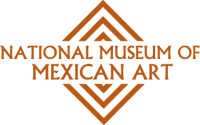
The Day of the Dead is a holiday traditionally celebrated on November 1 and 2, though other days, such as October 31 or November 6, may be included depending on the locality. The multi-day holiday involves family and friends gathering to pay respects and remember friends and family members who have died. These celebrations can take a humorous tone, as celebrants remember amusing events and anecdotes about the departed. It is widely observed in Mexico, where it largely developed, and is also observed in other places, especially by people of Mexican heritage. The observance falls during the Christian period of Allhallowtide. Some argue that there are Indigenous Mexican or ancient Aztec influences that account for the custom, and it has become a way to remember those forebears of Mexican culture. The Day of the Dead is largely seen as having a festive characteristic.

South Lawndale is a community area on the West Side of Chicago, Illinois. Over 80% of the residents are of Mexican descent and the community is home to the largest foreign-born Mexican population in Chicago.

Lower West Side is a community area on the West Side of Chicago, Illinois, United States. It is three miles southwest of the Chicago Loop and its main neighborhood is Pilsen. The Heart of Chicago is a neighborhood in the southwest corner of the Lower West Side.

The University of the Cloister of Sor Juana is a private university located in the former San Jerónimo Convent in the historic center of Mexico City. This convent is best known for having been the home of Sor Juana Inés de la Cruz for over twenty five years, she produced many of her writings here. After the convent was closed in the 19th century, the large complex was divided and was home to a number of institutions and businesses, including a large dance hall in the mid 20th century. In the 1970s, the government expropriated the complex, explored it and began the restoration process. In 1979, the current university was founded at this site and it is currently the benefactor and guardian of the complex. The institution offers bachelors, two masters and two certificates, mostly in the humanities. The institution also sponsors or co-sponsors a number of cultural and educational activities, mostly situated in the historic center of the city.
El Muerto, also known as El Muerto: The Aztec Zombie, is a fictional character and comic book superhero created by American comics creator Javier Hernandez and published through his own imprint Los Comex. The comic book follows the story of 21-year-old Diego de la Muerte, who while on his way to a local Dia de los Muertos festival in Whittier, California, is abducted and sacrificed by the Aztec gods of death and destiny only to return to earth one year later with supernatural powers. The character made his first appearance in a xeroxed black-and-white preview comic titled Daze of the Dead: The Numero Uno Edition. The initial series of El Muerto was met with critical success and the character's popularity has led to several adaptations in other media including a live-action award-winning independent film starring Wilmer Valderrama.
Ester Hernández is a California Bay Area Chicana visual artist recognized for her prints and pastels focusing on farm worker rights, cultural, political, and Chicana feminist issues. Hernández' was an activist in the Chicano Arts Movement in the 1960's and also made art pieces that focus on issues of social justice, civil rights, women's rights, and the Farm Worker Movement.

Self Help Graphics & Art, Inc. is a community arts center in East Los Angeles, California, United States. Established in 1970, Self Help Graphics served as a critical locus of activity during the Chicano art movement and remains a significant center for Chicanx and Latinx artistic production. SHG is most well-known for organizing annual Day of the Dead festivities, in addition to hosting exhibitions and musical performances. Throughout its history, the organization has worked with well-known artists in the Los Angeles area such as Barbara Carrasco, Los Four, the East Los Streetscapers, and Shizu Saldamando.
WRTE is an American radio station broadcasting a public radio / jazz format. It is licensed to Chicago, Illinois, United States, and serves the city of Chicago. The station is owned by Chicago Public Media. WRTE broadcasts in the HD Radio format.
Rudy Lozano was a labor activist and community organizer from Little Village, Chicago, Illinois. Lozano was important in organizing "Black-Brown unity" in the election of Harold Washington, the first African American mayor of Chicago. Lozano was murdered shortly after Washington's election, which was "a severe setback for the Chicago Mexican community, [who] lost a dynamic, rising political star and their major liaison in the Washington camp."

El Museo Latino is a museum featuring Latino and Hispanic art and history that is located at 4701 South 25th Street in South Omaha, Nebraska. Established in 1993, by Magdalena García, it is the first Latino art and history museum and cultural center in the Midwest.
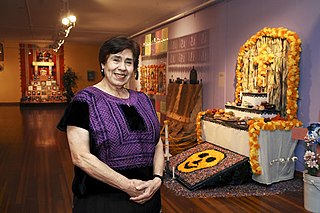
Herminia Albarrán Romero is a Mexican-American artist known for her papel picado and altar-making. She received a National Heritage Fellowship from the National Endowment for the Arts in 2005, which is the United States' highest honor in the folk and traditional arts.

Lalo Alcaraz is an American cartoonist most known for being the author of the comic La Cucaracha, the first nationally syndicated, politically themed Latino daily comic strip. Launched in 2002, La Cucaracha has become one of the most controversial in the history of American comic strips.
The Museo Alameda was the largest Latino museum in the United States and the first formal Smithsonian affiliate outside of Washington D.C., located in the historic Market Square in Downtown San Antonio, Texas.
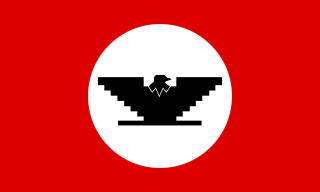
There is a very large Mexican American community in the Chicago metropolitan area. Illinois, and Chicago's Mexican American community is the largest outside of the Western United States.
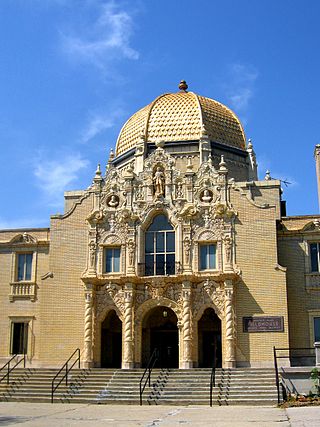
The West Side is one of the three major sections of the city of Chicago, Illinois, United States. It is joined by the North and South Sides. The West Side contains communities that are of historical and cultural importance to the history and development of Chicago. On the flag of Chicago, the West Side is represented by the central white stripe.
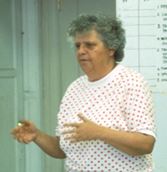
Karen Boccalero was an American nun, fine artist, and founder and former director of Self-Help Graphics & Art.
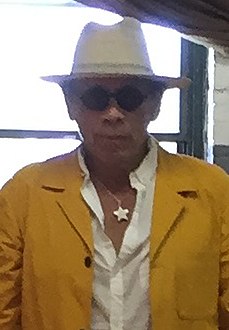
Marcos Raya is a Mexican artist based out of Chicago, Illinois. He became known in the Chicago neighborhood of Pilsen for his street murals. His studio is in the Chicago community area of New City.

Mónica Lavín is a Mexican author of eleven novels, various books of nonfiction, and thirteen short story collections, notable among them Ruby Tuesday no ha muerto ; Uno no sabe ; and her most recent collection, La corredora de Cuemanco y el aficionado a Schubert. In addition, she was awarded the Elena Poniatowska Ibero-American Novel Prize for her work Yo, la peor (2010). Her novel Cuando te hablen de amor (2017) was a finalist for the 2019 Mario Vargas Llosa Biennial Prize for the Novel. She is a member of the Sistema Nacional de Creadores (FONCA), was a teacher for the SOGEM Writers’ School, and was a professor in the Creative Writing Department of the Universidad Autónoma de la Ciudad de México in México City from 2000 to 2024.
Maria Gaspar is an American interdisciplinary artist and educator.
Margaret Garcia is a Chicana muralist, educator, and arts-advocate based in Los Angeles.
